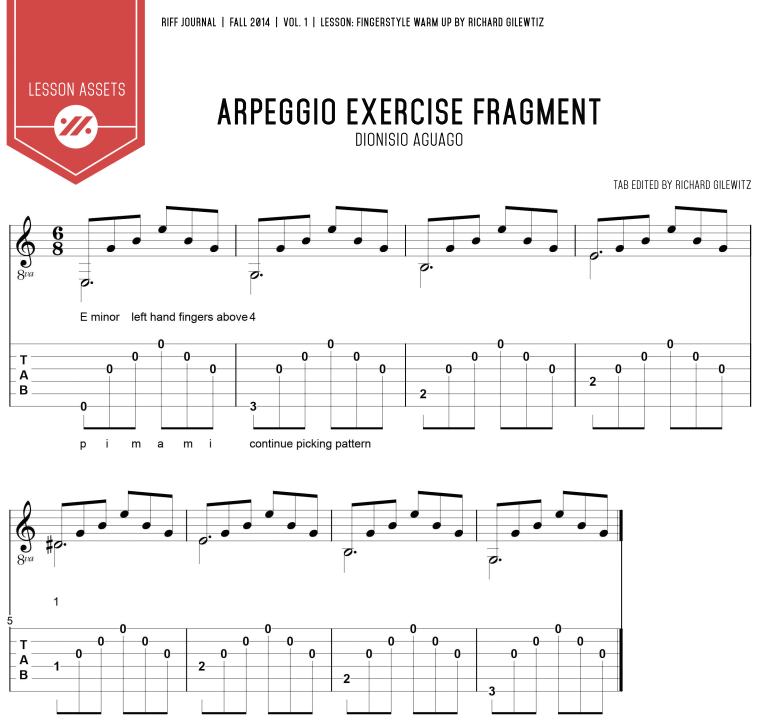
A frequent question I’ve been asked during guitar workshops, clinics, or private sessions has been related to what warm up exercises do I use. I always replied with somewhat of a varied manner because I didn’t have a specific one as I warm up in many different ways depending on the setting – anything from a live television or radio appearance, a concert, a recording situation, or a solo practice session. The variations include some slide guitar on the 12 string, a fragment of a tune that poses a challenge or requires attention, or a mental practice prior to a performance as I plan what I might start with along with the couple of follow up tunes with my usual chatter.
But it recently occurred to me that there has always been one particular exercise I have used in every situation; a natural warm up so commonly done by me that it must have flown under my consciousness radar.
It’s one of the E minor arpeggio studies by Dionisio Aguado, which is a bit more in depth in its full form than what I require for this warm up exercise. For now, I will provide a shorter portion of the study with the first eight bars to illustrate what allows me to navigate to the spot where I need to be before any performing or practice session. With this exercise, the metronome is crucial and here is what I suggest when indulging in this effort.
1) Play exactly four notes of the first bar which includes strings 6, 3, 2 and 1 with your picking fingers thumb, index, middle and ring (known as p, i, m, and a). Set your metronome click on 64 (or slower if you need to) and listen for the thumb to strike on the first click and the ring finger (a) to strike on the 2nd click. Notice there will be two notes played between the first two clicks (i and m). After this, allow for two clicks to occur on the metronome before repeating the exercise.
2) Play the first bar in its entirety followed by only the first note of the 2nd bar, which is string 6, fret 3 and played with the 4th or pinky finger. Listen for the click as in exercise 1 on the bass string and the first string and then again now on the bass string with that 4th finger down. Now allow for only one click before repeating the effort.
3) Add bars to your practice sessions, adjust the metronome slightly up and down, play with your eyes closed, follow your breathing, accent your thumb to sometimes strike harder or softer to develop independent finger control for more dynamic attacks and most importantly, make this a daily effort and treat it almost as a meditative session to prepare and tune your body as it gets ready to play.
Tab for this Guitar Lesson


